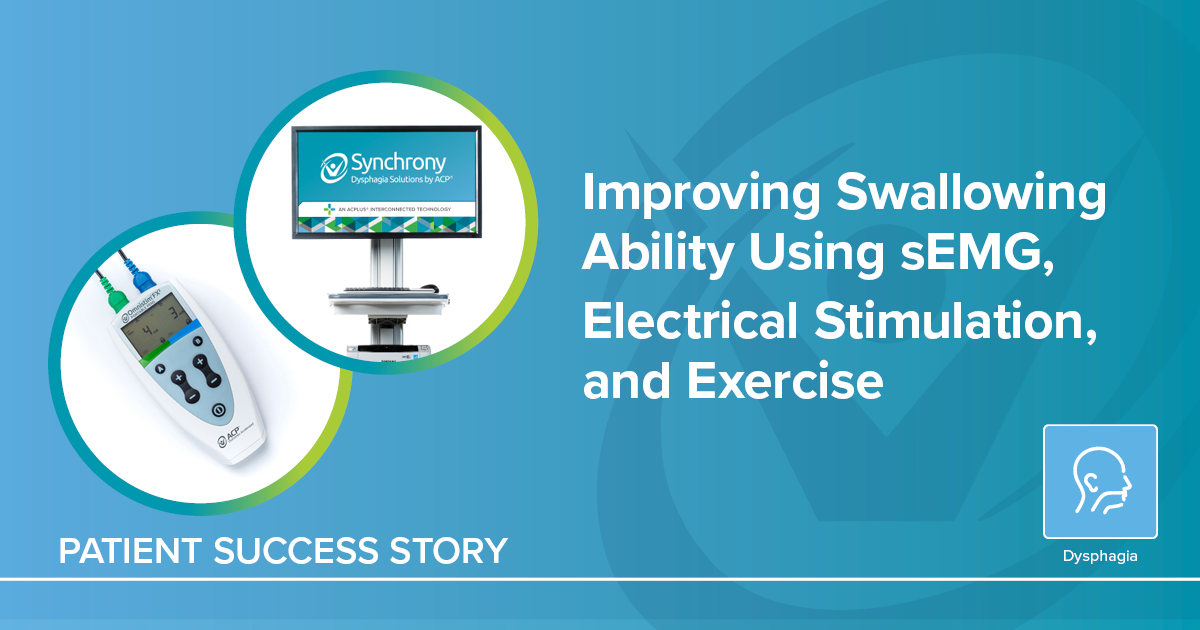
Patient Information: Male, Age 71
Diagnosis: Subdural Hematoma / Oropharyngeal Dysphagia
History:
This gentleman was admitted to a skilled nursing facility for rehabilitation services following hospitalization due to a fall, which resulted in a traumatic subdural hematoma (bleeding between the skull and brain). He was then diagnosed with encephalopathy (damage to the brain) and oropharyngeal dysphagia (difficulty swallowing), with a feeding tube placed during his hospitalization to provide nutrition and hydration. Prior to his accident, this gentleman consumed a regular diet and drank thin liquids.
Pre-Therapy Status:
•Clinical Swallow Evaluation (CSE): Failed 3 oz. water test, indicating swallowing difficulty and possible liquid entering airway; difficulty initiating a dry swallow; 9 second swallow initiation delay with food and drink; and poor cough production.
•Instrumental Swallow Study: Video Fluoroscopic Swallow Study (VFSS) completed during hospitalization showed significant oropharyngeal dysphagia due to delayed swallow initiation, reduced movement of tongue, reduced airway protection, and retention of liquids and puree consistencies in pharynx (throat). Subsequent swallows ineffective in clearing residue resulting in aspiration (material entering airway) of thickened liquids and puree consistencies. Cough reflex inadequate at clearing food and drink from airway.
•Functional Oral Intake Scale (FOIS): Level 1; nothing by mouth.
•Diet: All nutrition and hydration delivered via feeding tube.
Therapy Information:
•Biophysical Agent/Advanced Technology: Omnistim® FX2 Synchrony Portable and OmnisEMG™ Biofeedback.
•Frequency: 5x per week.
•Protocol: Synchrony OmnisEMG™ Biofeedback utilized for the following interventions: typical swallow using bow and arrow visualization, effortful swallow exercises utilizing bar graph visualization, and tongue against resistance exercises using diver visualization. Omnistim® FX2 Synchrony Portable utilized for head and neck patterned electrical neuromuscular stimulation (PENS) protocol to the masseter and posterior neck to improve swallow coordination and function.
•Duration: Six weeks.
•Other Therapy Services Provided: Chin tuck against resistance and respiratory muscle strength training.
Outcome:
•CSE: Revealed no further swallow delay with dry swallow, foods, and liquids; also noted productive, independent cough.
•VFSS: Showed improved tongue movement and airway protection, decreased pharyngeal residue, which was cleared with a second swallow, and no aspiration of thin or thickened liquids, puree or solid food consistencies.
•FOIS: Level 7; total oral diet without restrictions.
•Diet: Regular solids and thin liquids; feeding tube removed.
This gentleman states: “I wanted to do whatever I could to get back to eating food. The biofeedback really helped me see the progress I was making to keep me motivated over the months of therapy!”
The Speech-Language Pathologist states: “I love how the biofeedback system could give me objective data to track his outcomes. We were both able to see that he was doing the exercises with enough effort and frequency to make clinically significant changes in his muscle function!”
